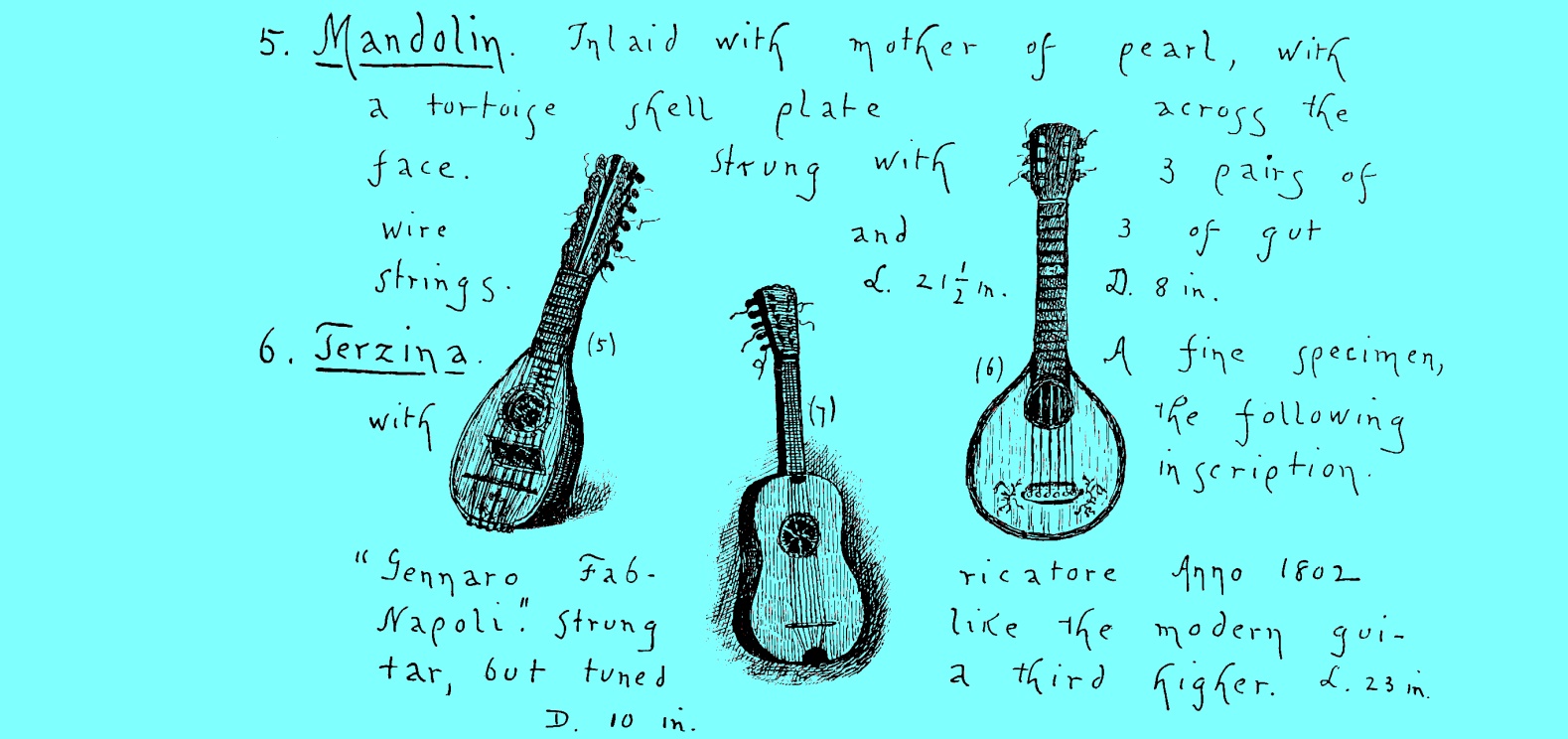Neil Gladd - Mandolinenspieler des Tages am 8. September
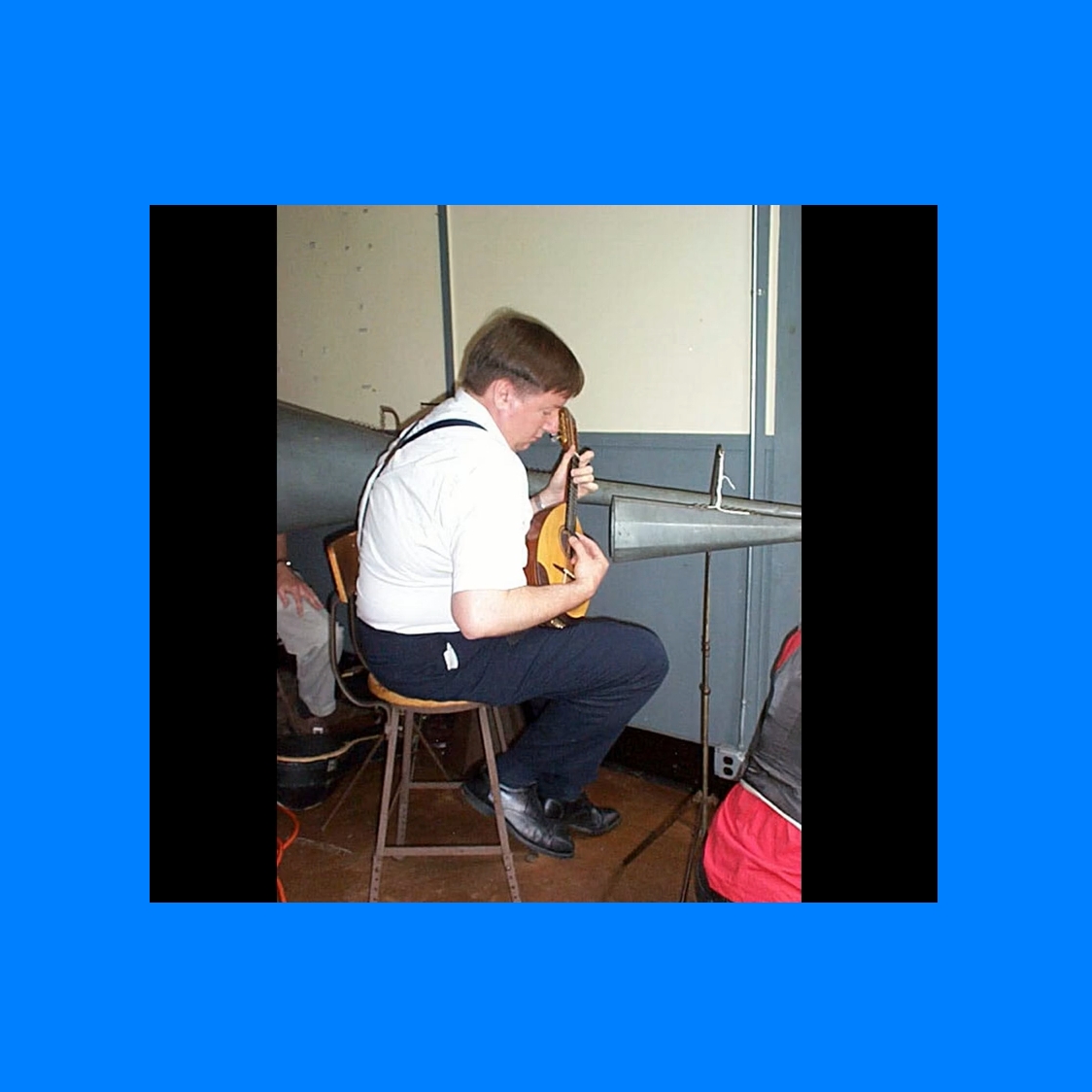
Viele Notenausgaben, vor allem auch Musik für Mandoline solo. Dazu gibt es einige kostenlose Downloads!
Musikalischer Stil
Klassik
Land
USA
Instrument
Deutsche Mandoline
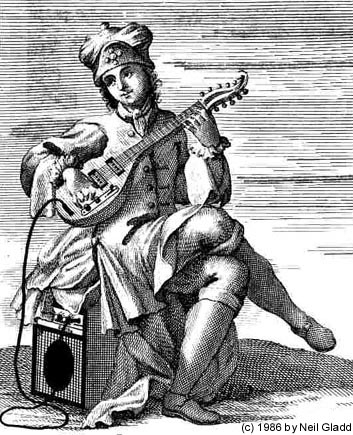
He continued his research there after graduating, began writing to libraries and publishers in Europe, and purchased microfilm copies of all the 18th century mandolin music from several Italian libraries and the British Library. In December 1981 he played his first paid recital (in a church), with a program that included the Bach Partita in E, the Hummel Sonata, the world premiere of the Sonata: Variations for Mandolin and Piano (1965) by Carman Moore, and his own 3 Rags After Bach (for piano). The concert got mentioned in the Washington Post when Norman Levine just happened to be in town and was about to start his publishing company, Plucked String Editions. They met in January, 1982 and Neil spent most of the 1980s as the music Editor of Plucked String Editions, which published some of his original compositions and historical music that he had found. Levine asked him to arrange has rags for mandolin ensemble, or he never would have thought of doing it. He was also inspired my Bach to start writing Sonatas and Partitas for solo mandolin, and his Sonata II for Solo Mandolin ends with a fugue. After many years of visiting as a researcher, he was hired by the Library of Congress in 1991 to work in the Recorded Sound Section.
In 1998 he began a new job as a Performing Arts Examiner for the Copyright Office, and retired from the Library on November 30, 2021. While working in the Recorded Sound Section be began researching early mandolin recordings on his lunch hours. Whenever he received the catalog for a record auction, he would check all of the mandolin recordings against the Library collection. If they had 10 copies, he would put in a low bid. If the Library had no copies, he would bid higher to make sure that he got it. He currently owns about 600 mandolin 78s and 30 mandolin cylinders. At least half of those are recordings that the Library of Congress does not have, so he is leaving his collection to the Library in his will.
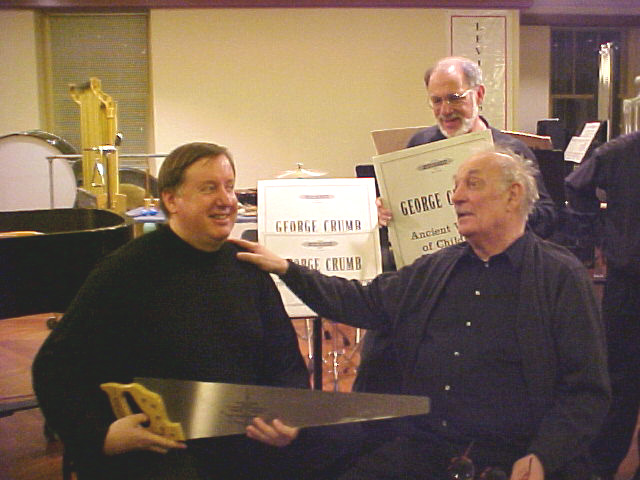
Neil Gladd mit dem Komponisten George Crumb
Neil Gladd (b. 1955) is an American classical mandolinist, composer, researcher, publisher, collector of early mandolin recordings, and the builder of 6 electric mandolins. He grew up in the suburbs of Washington, DC, where both of his parents worked for the federal government. His first instrument was the trumpet (because of Herb Alpert) in elementary school, but started playing the mandolin at 18, when he was given a really nice one that had been given to his grandmother.
He started studying at Virginia Tech in 1973, without having chosen a major yet, but when a Music degree was offered his second year, he told the faculty that he wanted to major in the Mandolin. They said that he could not do that, because they could not teach it, but at that time the mandolin was not taught at ANY university in the United States, so he stayed at Virginia Tech and got a general education in music while teaching himself the mandolin.
He received his BA in Music in 1978, and did get a little coaching from the violin instructor, who was also his advisor, and did several independent studies on music research techniques. This instructor also recommended that he buy the Bach Sonatas and Partitas. As a student, he performed the Vivaldi Concerto, the Beethoven pieces, the Hummel Sonata, the Mozart songs, and the Norbert Sprongl Duo for mandolin and guitar, Op. 85 (with mandolin and harpsichord, as no guitarist was available!) He bought a copy of The Guitar and Mandolin by Philip J. Bone, made a list of all the mandolin composers in the book, then made his first visit to the Library of Congress Music Division, and looked up all of them in the catalog. Some of the music he found there was played on his student recitals from manuscripts and out of print editions. These included the first modern performances of the Sonata in D and the Concerto in C by Carlo Arrigoni.
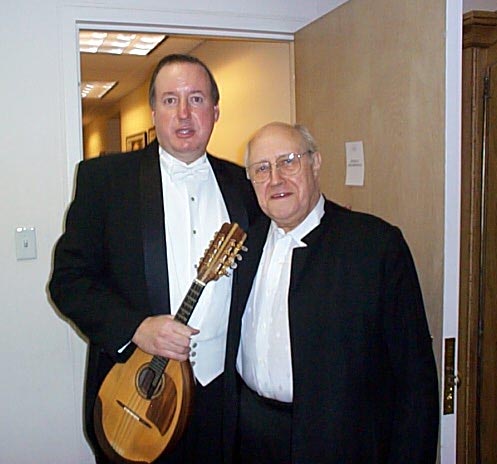
Neil Gladd mit Rostropowitsch
In the 1980s he was devoting all of his time to the mandolin and most of his performances were recitals and chamber music. After having a full time job, more of his performances were orchestral parts, and he played with the Kennedy Center Opera House Orchestra, the Orchestra of the New York City Ballet, the National Symphony, The Baltimore Symphony, the Delaware Symphony, and the Philadelphia Orchestra under Rostropovich. He also recorded Prokofiev's Romeo and Juliet with the Baltimore Symphony under Marin Alsop.
After Plucked String Editions went out of business in 2005, he started his own company, Neil Gladd Publications in 2007. Later this year, he will be issuing a CD of Early Italian Mandolin Soloists, from recordings from his collection.
After he discovered some contemporary classical compositions for the electric mandolin, he built one for himself, and later built 5 more to sell, after other players started asking for them. In 1986 he performed at mandolin festivals in Germany, Sweden and Belgium. While in Germany he was invited to perform as a member of Das Deutsche Zupforchester under Siegfried Behrend. When first meeting the German players, many asked if he played a Gibson mandolin, and were surprised to learn that he was playing a Seiffert! After the festivals, Seiffert invited Neil to spend 3 weeks at his shop. There he learned how to re-fret instruments, and re-fretted his own mandolin under Seiffert's guidance.
Neil Gladd (geb. 1955) ist ein amerikanischer klassischer Mandolinist, Komponist, Forscher, Verleger, Sammler früher Mandolinenaufnahmen und Erbauer von sechs elektrischen Mandolinen. Er wuchs in einem Vorort von Washington, D.C. auf, wo seine beiden Eltern für die Bundesregierung arbeiteten. Sein erstes Instrument war die Trompete (wegen Herb Alpert) in der Grundschule, aber mit 18 Jahren begann er Mandoline zu spielen, als er ein wirklich schönes Instrument bekam, das er seiner Großmutter geschenkt hatte.
Er begann 1973 an der Virginia Tech zu studieren, ohne sich bisher für ein Hauptfach entschieden zu haben, aber als in seinem zweiten Jahr ein Musikstudium angeboten wurde, teilte er der Fakultät mit, dass er Mandoline als Hauptfach studieren wollte. Sie sagten, dass er das nicht tun könne, weil sie es nicht unterrichten könnten, aber zu dieser Zeit wurde Mandoline an KEINER Universität in den Vereinigten Staaten gelehrt, also blieb er an der Virginia Tech und erhielt eine allgemeine Musikausbildung, während er sich das Mandolinespielen selbst beibrachte.
Er erhielt 1978 seinen BA in Musik und erhielt ein wenig Coaching von dem Geigenlehrer, der auch sein Berater war, und führte mehrere unabhängige Studien zu Musikforschungstechniken durch. Dieser Lehrer empfahl ihm auch den Kauf der Bach-Sonaten und Partiten. Als Student spielte er das Vivaldi-Konzert, die Beethoven-Stücke, die Hummel-Sonate, die Mozart-Lieder und das Norbert-Sprongl-Duo für Mandoline und Gitarre, Op. 85 (mit Mandoline und Cembalo, da kein Gitarrist verfügbar war!)
Er kaufte ein Exemplar von „The Guitar and Mandolin“ von Philip J. Bone, erstellte eine Liste aller Mandolinenkomponisten im Buch und machte dann seinen ersten Besuch in der Bibliothek von Congress Music Division und hat sie alle dort im Katalog nachgeschlagen. Ein Teil der Musik, die er dort fand, wurde in seinen Studentenkonzerten aus Manuskripten und vergriffenen Ausgaben gespielt. Dazu gehörten die ersten modernen Aufführungen der Sonate in D und des Konzerts in C von Carlo Arrigoni.
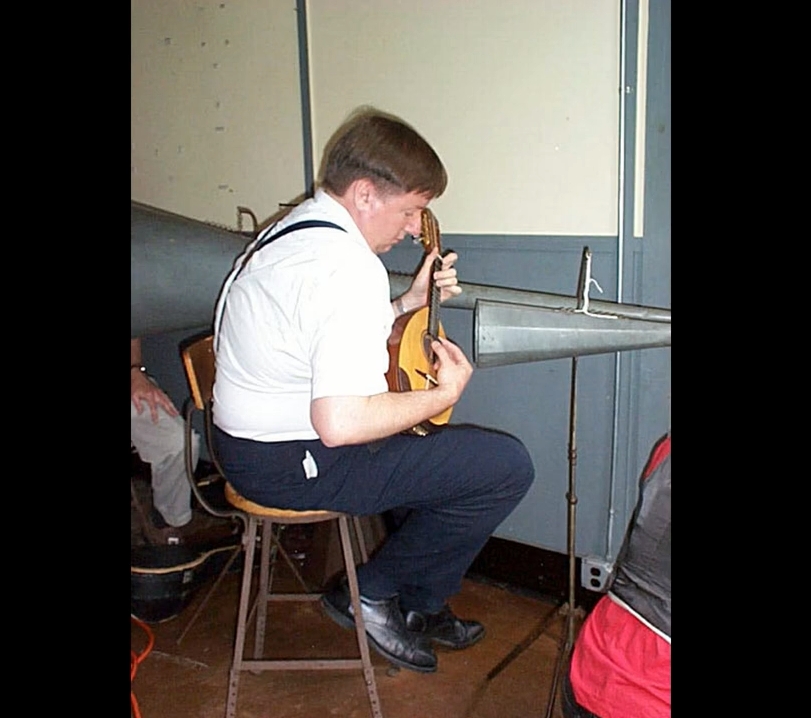
Nach seinem Abschluss setzte er dort seine Forschungen fort, begann, an Bibliotheken und Verlage in Europa zu schreiben und kaufte Mikrofilmkopien der gesamten Mandolinenmusik des 18. Jahrhunderts in mehreren italienischen Bibliotheken und der British Library.
Im Dezember 1981 spielte er sein erstes bezahltes Konzert (in einer Kirche) mit einem Programm, das die Bach-Partita in E-Dur, die Hummel-Sonate, die Weltpremiere der Sonate: Variationen für Mandoline und Klavier (1965) von Carman Moore und seine eigenen 3 Rags After Bach (für Klavier).
Das Konzert wurde in der Washington Post erwähnt, als Norman Levine zufällig in der Stadt war und gerade dabei war, seinen Verlag Plucked String Editions zu gründen. Sie trafen sich im Januar 1982 und Neil verbrachte den größten Teil der 1980er Jahre als Musikredakteur von Plucked String Editions, das einige seiner Originalkompositionen und historische Musik veröffentlichte, die er gefunden hatte. Levine bat ihn, Rags für das Mandolinenensemble zu arrangieren, sonst wäre er nie auf die Idee gekommen, es zu tun. Er wurde auch von Bach dazu inspiriert, Sonaten und Partiten für Solo-Mandoline zu schreiben, und seine Sonate II für Solo-Mandoline endet mit einer Fuge. Nach vielen Jahren als Forscher wurde er 1991 von der Library of Congress eingestellt, um in der Abteilung für Tonaufzeichnungen zu arbeiten.
1998 begann er eine neue Stelle als Prüfer für darstellende Künste beim Copyright Office- Am 30. November 2021 ging er in den Ruhestand. Während seiner Arbeit in der Tonaufzeichnungsabteilung begann er in seiner Mittagspause mit der Recherche früher Mandolinenaufnahmen. Immer wenn er den Katalog für eine Schallplattenauktion erhielt, überprüfte er alle Mandolinenaufnahmen mit der Bibliothekssammlung. Wenn sie 10 Exemplare hätten, würde er ein niedriges Gebot abgeben. Wenn die Bibliothek keine Exemplare hätte, würde er ein höheres Gebot abgeben, um sicherzustellen, dass er sie bekam. Derzeit besitzt er etwa 600 Mandolinenaufnahmen auf Schellackplatten (78er) und 30 Mandolinenzylinder. Mindestens die Hälfte davon sind Aufnahmen, über die die Library of Congress nicht verfügt, weshalb er seine Sammlung in seinem Testament der Library hinterlässt.
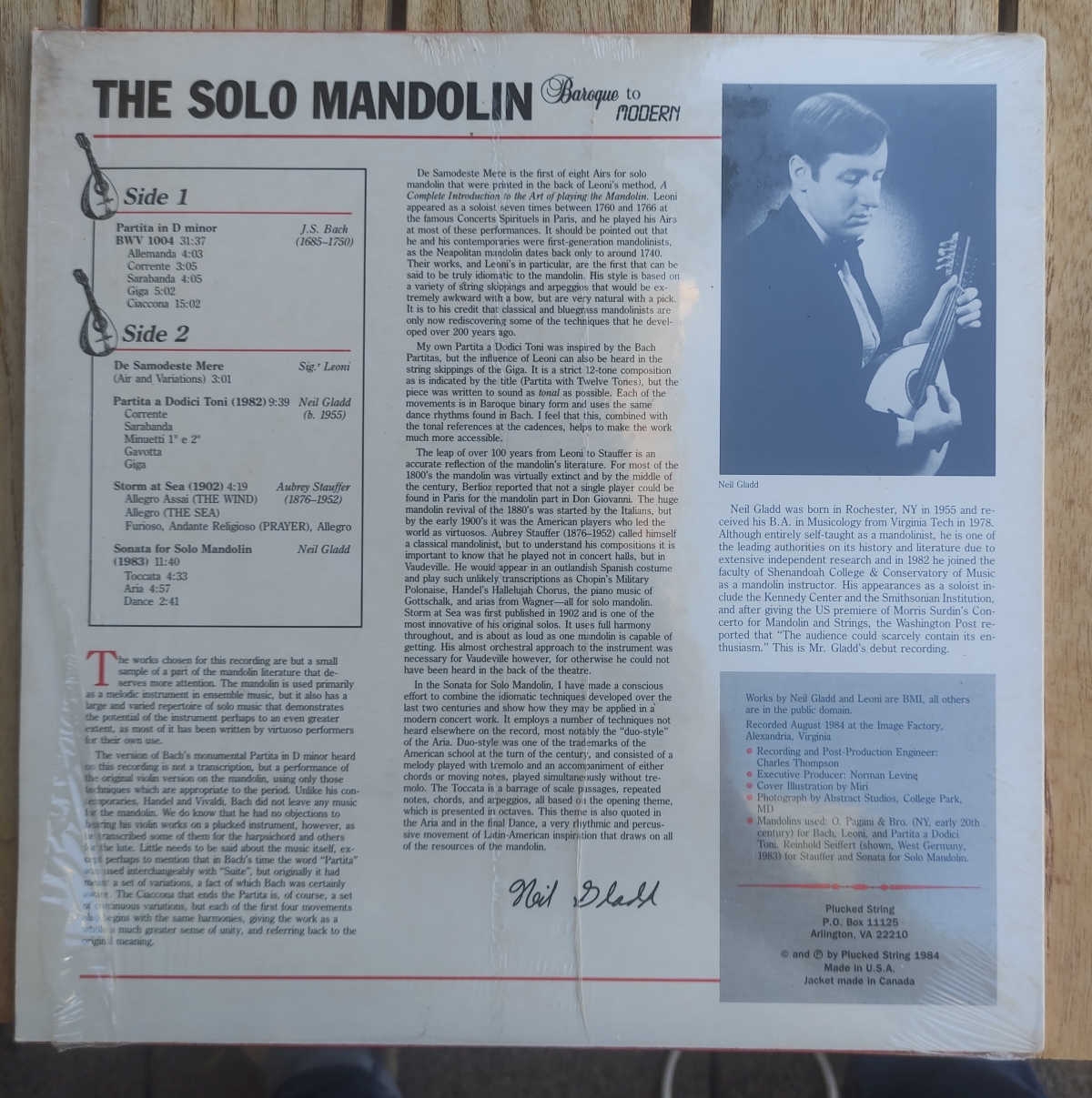

In den 1980er Jahren widmete er sich ausschließlich der Mandoline und die meisten seiner Auftritte waren Konzerte und Kammermusik. Nachdem er einer Vollzeitbeschäftigung nachgegangen war, waren mehr seiner Auftritte Orchesterparts, und er spielte mit dem Kennedy Center Opera House Orchestra, dem Orchester des New York City Ballet, dem National Symphony, dem Baltimore Symphony, dem Delaware Symphony und dem Philadelphia Orchester unter Rostropowitsch. Außerdem nahm er Prokofjews Romeo und Julia mit dem Baltimore Symphony Orchestra unter Marin Alsop auf.
Nachdem Plucked String Editions 2005 sein Geschäft aufgegeben hatte, gründete er 2007 seine eigene Firma, Neil Gladd Publications. Später in diesem Jahr wird er eine CD mit frühen italienischen Mandolinensolisten herausgeben, die Aufnahmen aus seiner Sammlung enthält.
Nachdem er einige zeitgenössische klassische Kompositionen für die elektrische Mandoline entdeckt hatte, baute er eine für sich selbst und baute später fünf weitere, um sie zu verkaufen, nachdem andere Spieler danach fragten.
1986 trat er auf Mandolinenfestivals in Deutschland, Schweden und Belgien auf. Während seines Aufenthalts in Deutschland wurde er eingeladen, als Mitglied des Deutschen Zupforchesters unter Siegfried Behrend aufzutreten. Beim ersten Treffen mit den deutschen Spielern fragten viele, ob er eine Gibson-Mandoline spiele, und waren überrascht, als sie erfuhren, dass er eine Seiffert-Mandoline spielte! Nach den Festivals lud Seiffert Neil ein, drei Wochen in seinem Laden zu verbringen. Dort lernte er, wie man Instrumente neu bundiert und unter Seifferts Anleitung bundierte er seine eigene Mandoline neu.
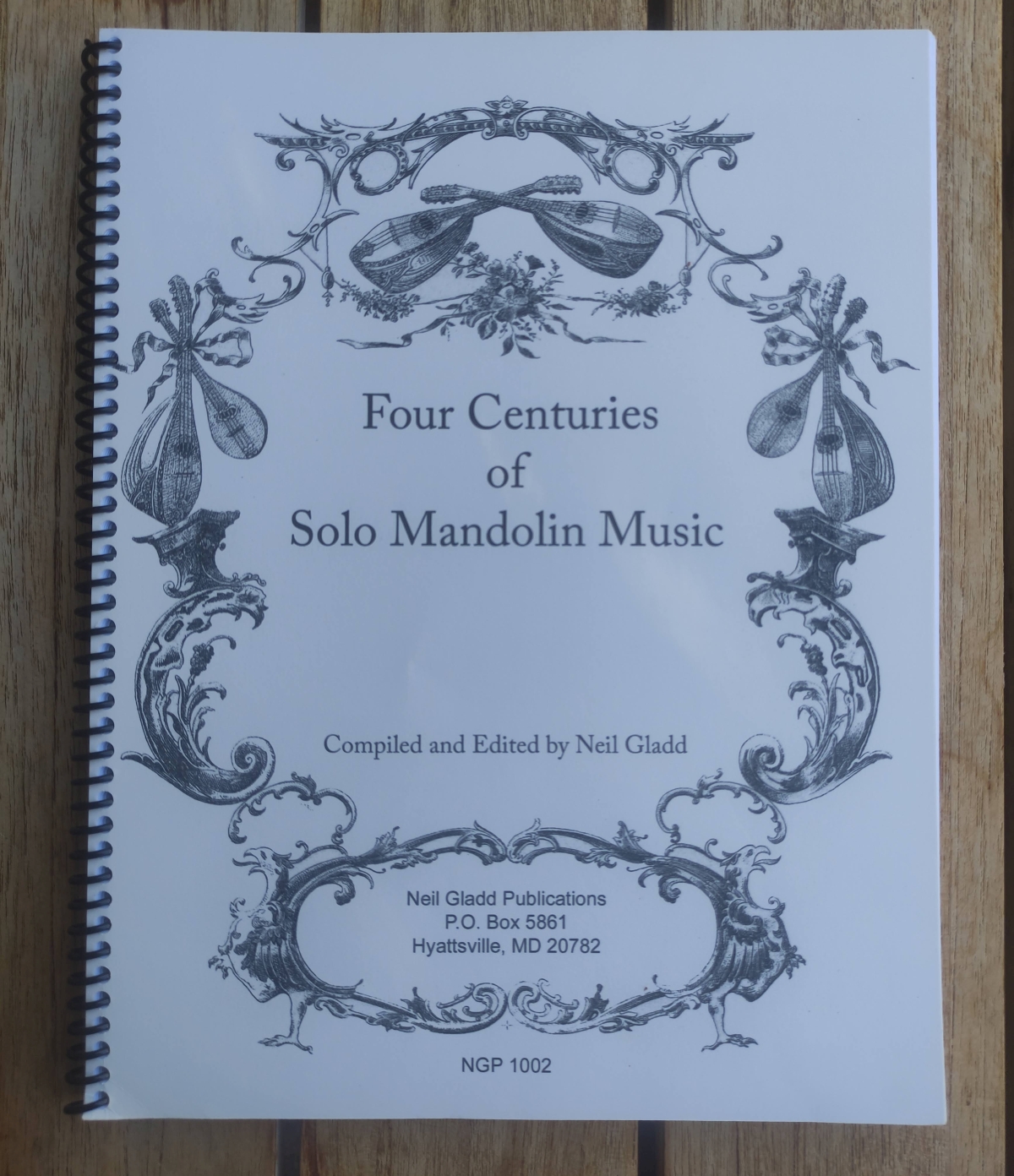
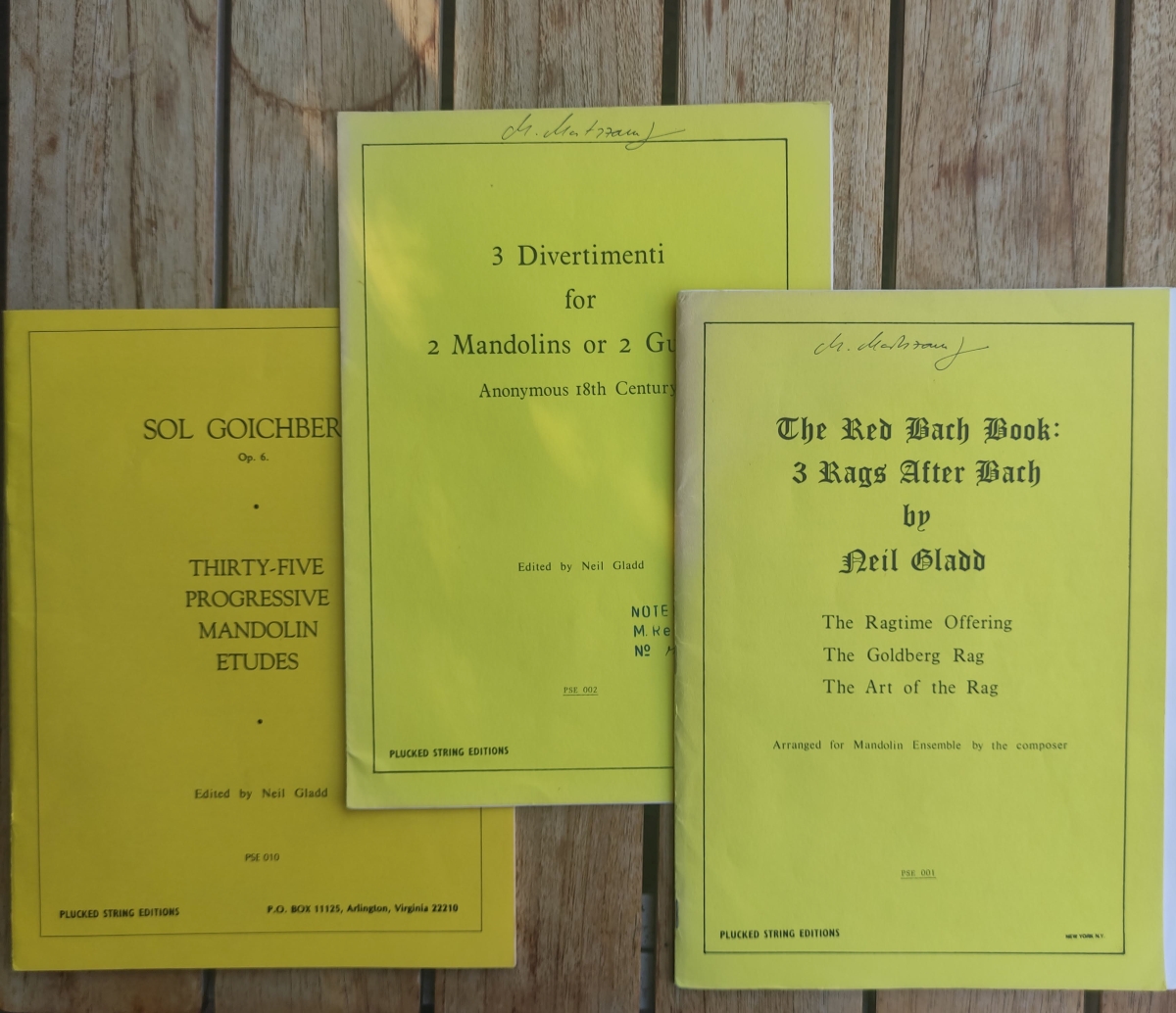
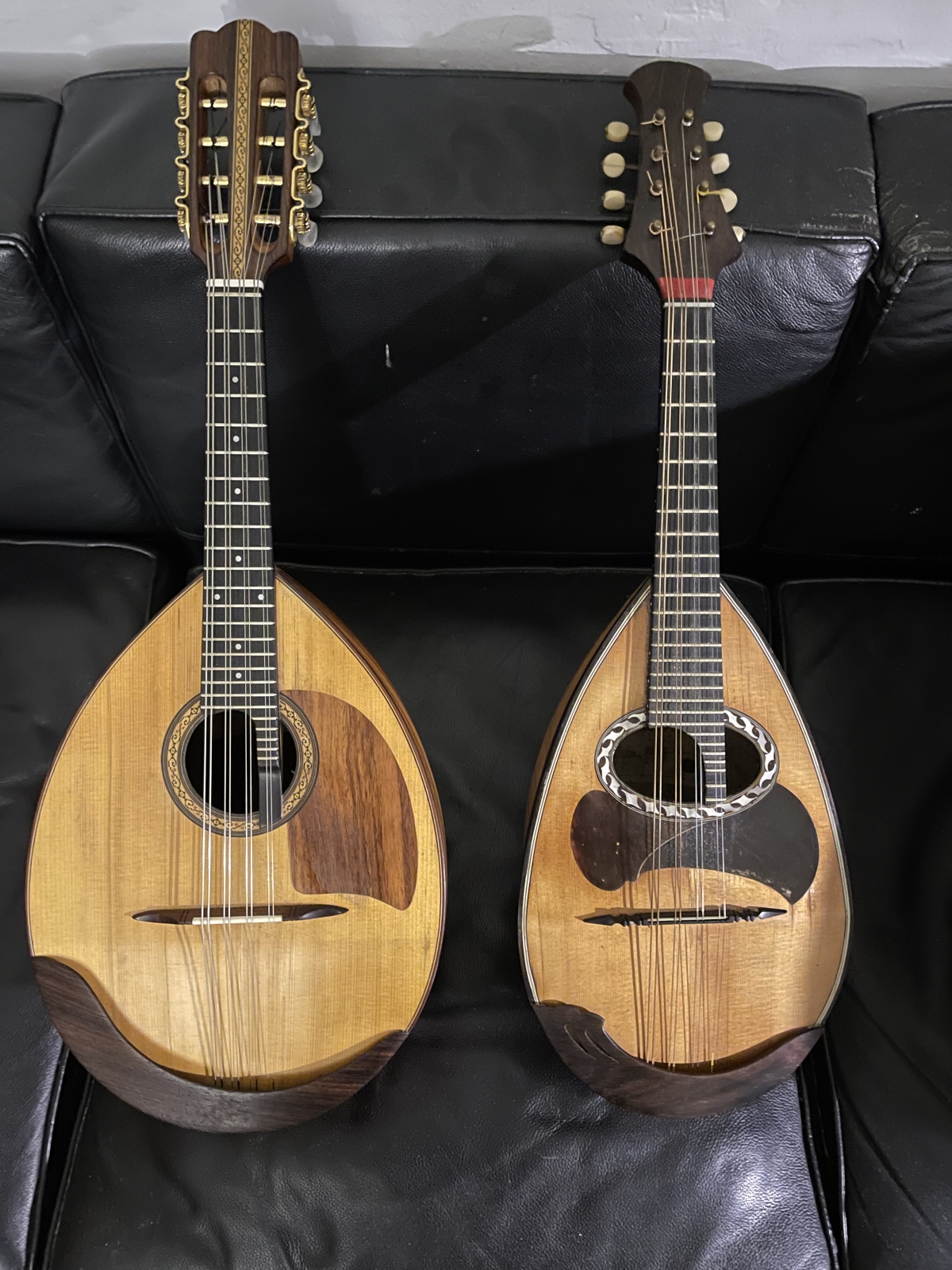
My mandolins: O. Pagani and Brothers (first mandolin, which I still use for some music), Reinhold Seiffert (1983) which I use when playing with orchestras, Raffaele Calace (1913) Just purchased last year, and I am playing more Italian music now that I have the right instrument for it. (Photo of the Seiffert and Calace attached.
***
Meine Mandolinen: O. Pagani and Brothers (erste Mandoline, die ich immer noch für einige Musikstücke verwende), Reinhold Seiffert (1983), die ich beim Spielen mit Orchestern verwende, Raffaele Calace (1913). Habe sie erst letztes Jahr gekauft und spiele jetzt mehr italienische Musik dass ich das richtige Instrument dafür habe. (Foto von Seiffert und Calace beigefügt).
Mein Lieblings-Mandolinen-Objekt
Ich stelle nun allen Mandolinenspielern die folgende Frage:
Ich fände es toll, wenn alle ein Bild eines Lieblings-Mandolinen-Objektes aus ihrer Wohnung schicken könnten. Macht ein Bild davon und schickt es mir! Ich denke an: Dekoration, Kunstwerk, Sammelstück, Buch, Plektren, Antiquitäten, Talisman, ….
Neils Lieblings-Mandolinen-Objekt
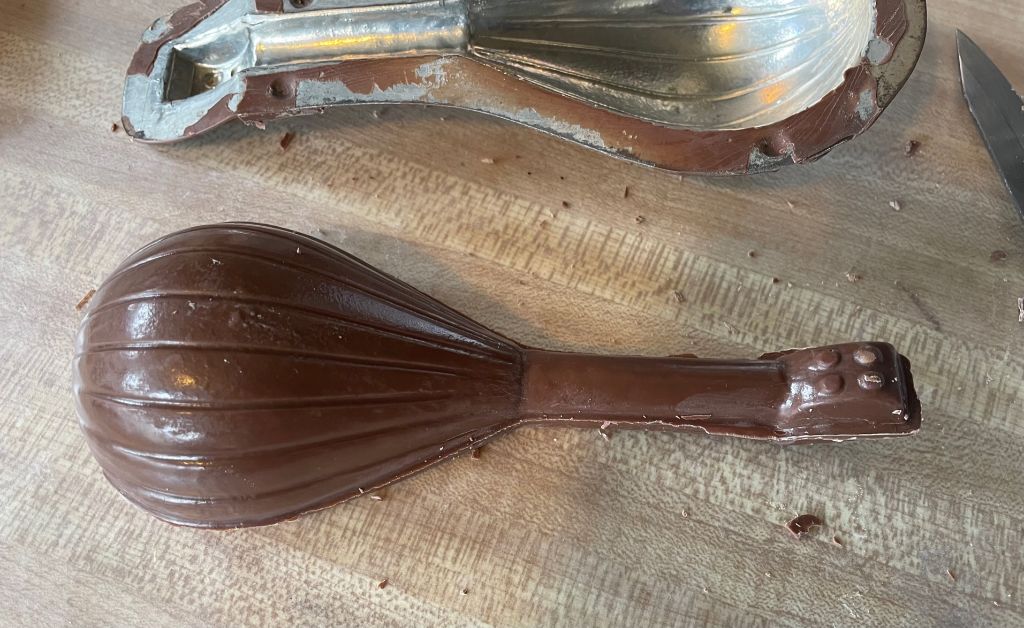
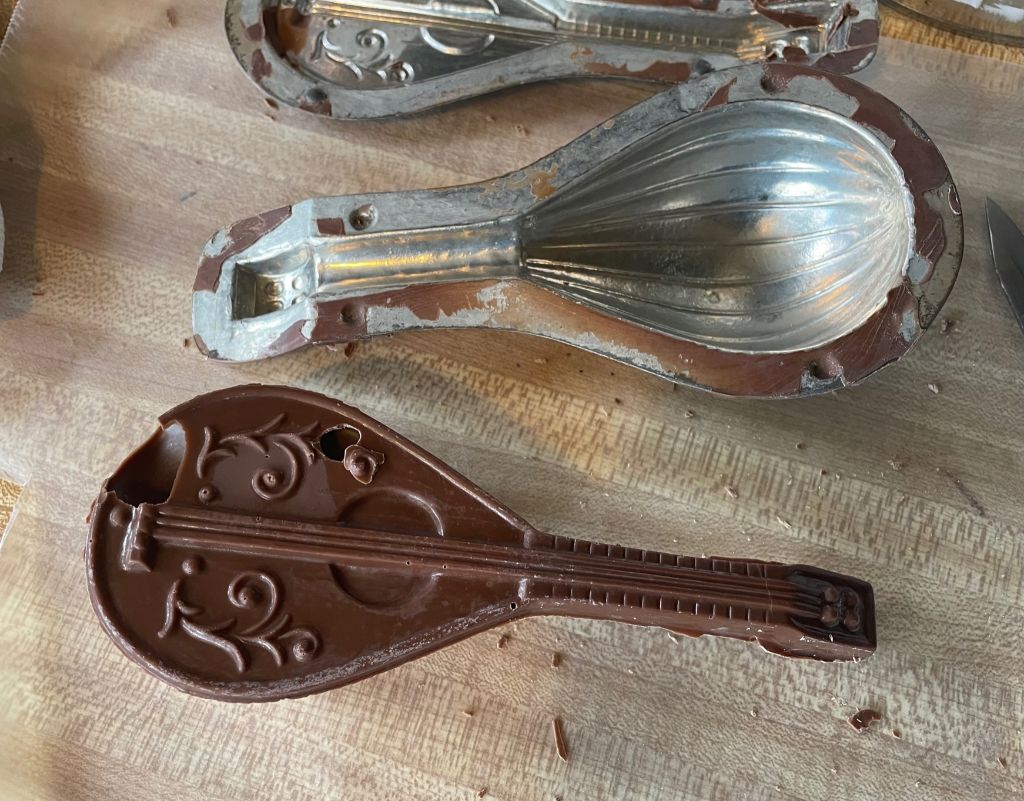
An antique mandolin chocolate mold!
Ein alte Mandolinen-Schokoladenform!
Neil Gladd hat mir folgende Antworten für meinen Fragebogen geschickt.
Fragebogen
I play the mandolin because I was given one that had been given to my grandmother. It was an exceptionally nice one, and I fell in love with the sound of it.
***
Ich spiele Mandoline, weil ich eine von meiner Großmutter geschenkt bekommen habe. Es war außergewöhnlich schön und ich habe mich in den Klang verliebt.
Neil Gladd: Sonata I for Solo Mandolin (1983) II. Aria
The 2nd movement of my first Sonata for Solo Mandolin. Written in 1983, and recorded in 1984 on an LP, one year before CDs came on the market.
Neil Gladd: Three Songs After Thomas Campion, for mezzo-soprano and mandolin
There are two songs by Mozart for mandolin and voice, and I never had anything to program with them, so I searched for more existing songs, asked my composer friends to write more for me, and eventually wrote these songs of my own. These poems were originally set as lute songs by Campion, so there was already a history of performing them with a plucked instrument. For the first 2 songs, I used only his poems, and wrote all new music. For the last song, Shall I Come Sweet Love to Thee, I kept Campion's melody, and just wrote a new part for the mandolin.
Elizabeth Vercoe: Herstory IV (1997) for mezzo soprano and mandolin
Mezzo soprano Marjorie Bunday and mandolinist Neil Gladd performing Elizabeth Vercoe's Herstory IV, June 8, 2010, at the Lyceum, Alexandria, VA. For more information:
http://www.elizabethvercoe.com/
Sol Goichberg: From the Forest, 1st movement- Light and Shadow
Sol Goichberg (1908-1978) was born into a musical family, the son of a famous cantor in Chotin, Bessarabia. Although self-taught as a mandolinist, he had studied the violoncello at the Malcon Conservatory of Music in Boston, and received a thorough musical education in theory, harmony, and counterpoint. His performances as a recitalist, with various mandolin ensembles, and as a concerto soloist won him high praise from the New York music critics.
Goichberg did not start performing until around 1930, after the “Golden Age” had ended. He had more of a classical training than the earlier American soloists and although he felt that it was important to play original mandolin works, he could not find many at that time that met his musical standards, so he often performed violin music or made arrangements. Although he possessed a virtuoso technique, his own concert works were more introverted than showy, and I consider them to the be the beginning of a more serious American mandolin repertoire.
His recordings of the Vivaldi concertos with Max Goberman and the New York Sinfonietta were the first by an American mandolinist, and are still available. Originally, his recordings of the Concerto in C for Mandolin and the Concerto in G for 2 Mandolins (with his student, Mary Zelnicki) did not appear on the same LP, but they have been reissued both together and separately many times, in various compilations on LP and CD. His recording of the Concerto in C was included on “Great CBS Masterworks Recordings of Baroque Favorites from 'Kramer vs. Kramer.'" That is one of four reissues that can currently be found on iTunes.
Seth Weeks: Polka Caprice for mandolin and piano
Seth Weeks (ca. 1865-after 1924) was the only black professional mandolin soloist during the golden age of the mandolin, and among his published compositions is his Mandolin Concerto of 1900, the first by an American composer. Weeks toured in vaudeville on the Keith circuit and had many compositions for mandolin published, both in the U.S. and in England, where he spent much of his career. This is one of three Weeks compositions to be included in a collection of mandolin and piano music, currently in preparation:
http://www.neilgladd.com/Publications/
It is performed here by Neil Gladd, mandolin. For more information on the concert:
